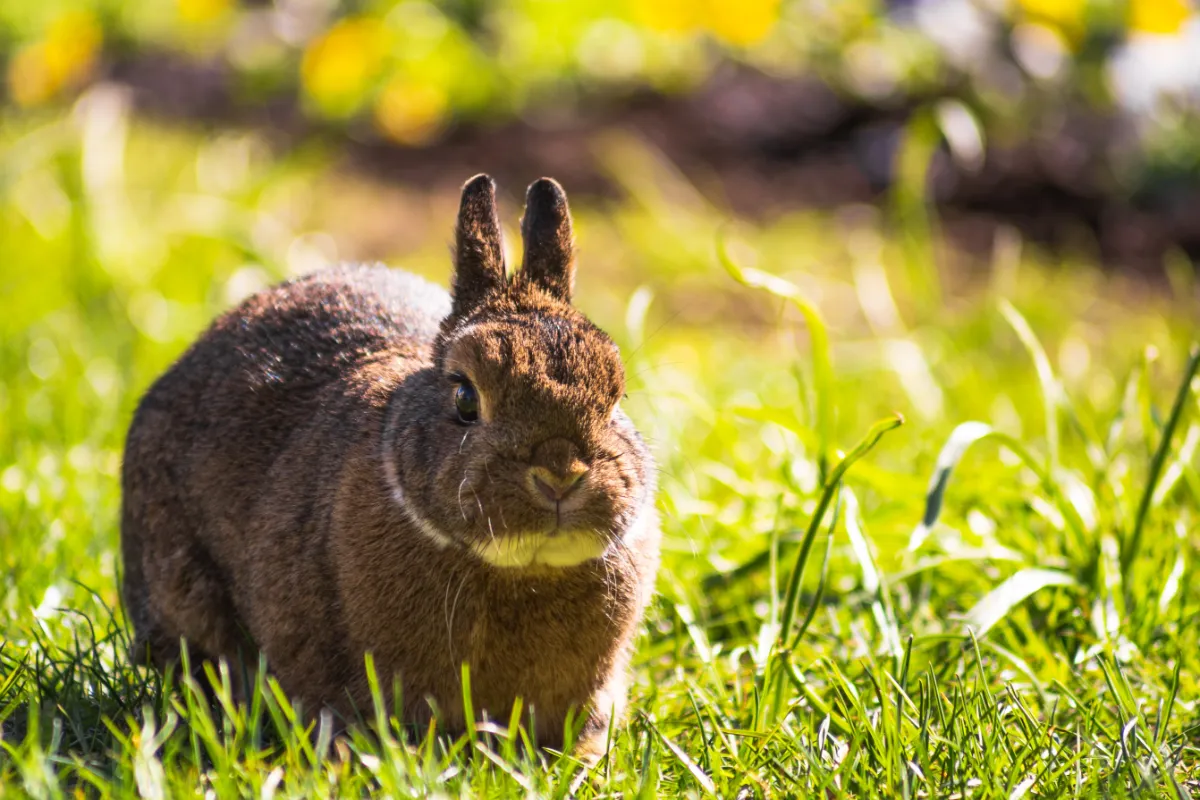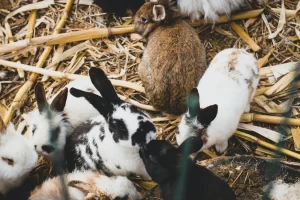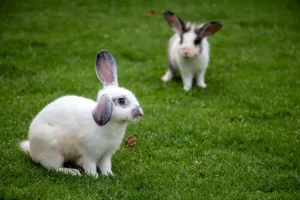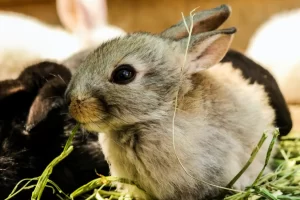Are you unsure about the importance of pedigreeing a rabbit? Well, let me assure you, it’s not just about fancy paperwork.
Pedigreeing plays a crucial role in understanding a rabbit’s ancestry, breed characteristics, and genetic health. By gathering and documenting this information, you can ensure the accuracy and completeness of your rabbit’s lineage.
In this article, we will guide you through the process of pedigreeing a rabbit, providing you with the knowledge and tips you need to serve your furry friend best.
In This Article
- 1 Key Takeaways
- 2 Understanding the Importance of Pedigreeing a Rabbit
- 3 Gathering the Necessary Information for Pedigreeing
- 4 Examining the Rabbit’s Ancestry and Lineage
- 5 Identifying and Documenting Breed Characteristics
- 6 Recording Genetic Information and Health History
- 7 Organizing and Maintaining a Pedigree Chart
- 8 Tips for Ensuring Accuracy and Completeness in Rabbit Pedigrees
- 9 Frequently Asked Questions
- 9.1 What Are the Benefits of Pedigreeing a Rabbit?
- 9.2 Can I Pedigree a Rabbit Without Knowing Its Full Ancestry?
- 9.3 How Long Does It Typically Take to Complete a Pedigree Chart for a Rabbit?
- 9.4 Can I Include Non-Purebred Rabbits in a Pedigree Chart?
- 9.5 Is It Necessary to Pedigree a Rabbit if I Only Plan to Keep It as a Pet and Not for Breeding Purposes?
- 10 Conclusion
Key Takeaways
- Pedigree records provide valuable information about a rabbit’s lineage and hereditary traits.
- Accurate pedigree records help in selecting breeding pairs and avoiding health issues or genetic abnormalities.
- Pedigreeing allows tracking of a rabbit’s ancestry, including parents, grandparents, and great-grandparents.
- Well-documented lineage establishes a reputation as a responsible breeder.
Understanding the Importance of Pedigreeing a Rabbit
You should understand the importance of pedigreeing your rabbit to ensure its genetic history. Pedigree records play a crucial role in rabbit breeding, as they provide valuable information about the lineage and hereditary traits of a rabbit. By maintaining accurate pedigree records, you can make informed decisions when selecting breeding pairs and avoid potential health issues or genetic abnormalities.
Pedigreeing your rabbit allows you to track its ancestry, including the lineage of its parents, grandparents, and even great-grandparents. This information helps in identifying desirable traits that you want to pass on to future generations of rabbits.
Moreover, pedigree records also enable you to establish a reputation as a responsible and knowledgeable breeder, which can attract potential buyers who appreciate the value of a well-documented rabbit’s lineage.
Gathering the Necessary Information for Pedigreeing
To pedigree a rabbit, start by gathering all of the necessary information from reliable sources and carefully cross-referencing it. Gathering accurate information is crucial in creating a reliable pedigree for your rabbit.
Begin by obtaining the rabbit’s basic details such as its birth date, gender, and breed. Next, collect information about the rabbit’s parents, including their names, breeds, and any relevant health records.
Utilizing online pedigree databases can be a valuable tool in expanding your research and verifying the accuracy of the information you have gathered. These databases provide a wealth of information and allow you to trace the lineage of your rabbit back several generations.
It’s essential to ensure the credibility of the sources you use, as inaccurate information can lead to an unreliable pedigree. By diligently gathering accurate information and utilizing online pedigree databases, you can create a comprehensive and trustworthy pedigree for your rabbit.
Examining the Rabbit’s Ancestry and Lineage
When examining the rabbit’s ancestry and lineage, look for any notable traits that have been passed down through generations and cross-check them with available records. This process is crucial for understanding the genetic diversity within a rabbit breed and studying the impact of inbreeding. By examining the ancestry, breeders can identify any potential health issues or genetic disorders that may have been passed down. It also allows them to assess the overall genetic quality of the breed and make informed breeding decisions. To assist in this process, a table is provided below to help organize and analyze the rabbit’s lineage. By carefully studying the rabbit’s ancestry, breeders can ensure the preservation and improvement of the breed while avoiding any negative consequences of inbreeding.
| Generation | Rabbit’s Name |
|---|---|
| 1 | Daisy |
| 2 | Charlie |
| 3 | Bella |
Identifying and Documenting Breed Characteristics
Examine the rabbit’s physical appearance and behavior, as well as its lineage, in order to accurately identify and document breed characteristics. Evaluating breed standards is essential in determining the specific traits that define a particular rabbit breed.
Pay close attention to the rabbit’s body shape, size, and fur texture. Note the presence of any distinct markings or color patterns. Assess its behavior, looking for breed-specific temperaments, energy levels, and social tendencies.
Recognizing genetic variations is crucial for understanding the potential range of characteristics within a breed. Genetic variations can result in differences in coat color, eye color, and even ear shape.
Recording Genetic Information and Health History
You should consider both the genetic information and health history of a rabbit in order to make informed breeding decisions and ensure the overall well-being of the breed. By recording breeding patterns and tracking genetic diseases, you can significantly contribute to the long-term health and quality of the rabbit population. Here are three important reasons why this is crucial:
- Genetic Diversity:
Keeping track of breeding patterns allows you to maintain genetic diversity within the breed. By avoiding close relatives breeding, you can minimize the risk of inherited genetic disorders and improve overall vitality.
- Health Screening:
Recording the health history of rabbits helps identify any genetic diseases or conditions that may be present within the breed. This enables breeders to make informed decisions about which rabbits to breed, reducing the likelihood of passing on harmful genetic traits.
- Selective Breeding:
Tracking genetic diseases allows you to selectively breed rabbits with healthier genetic backgrounds. By focusing on rabbits with fewer genetic diseases, breeders can work towards improving the overall health and resilience of the breed.
Organizing and Maintaining a Pedigree Chart
To effectively organize and maintain a pedigree chart, it’s important to accurately document and track the genetic lineage of each rabbit in your breeding program. Managing pedigree records is crucial in ensuring the success and quality of your rabbit breeding endeavors.
Start by creating a hierarchy of rabbit pedigrees, with each rabbit having their own individual record. Include important information such as identification numbers, names, dates of birth, and detailed genetic information. This will allow you to easily trace the ancestry and genetic traits of each rabbit.
Additionally, it’s essential to update and maintain these records regularly to keep them accurate and up-to-date. By managing pedigree records effectively, you can make informed breeding decisions, track genetic traits, and ensure the overall health and success of your rabbit breeding program.
Tips for Ensuring Accuracy and Completeness in Rabbit Pedigrees
Make sure to carefully cross-reference all available documentation with the information provided by the breeder to ensure accuracy and completeness in the rabbit pedigrees. When it comes to pedigrees, there are common mistakes that can occur, such as incorrect parentage or missing information. To avoid these errors, follow these tips:
- Double-check the names and identification numbers of the rabbits involved.
- Verify the lineage by confirming the parentage and generation of each rabbit.
- Look for any missing or inconsistent information, such as birthdates or registration numbers.
In recent years, the role of DNA testing has become increasingly important in rabbit pedigrees. DNA testing can provide valuable information about the genetic makeup of a rabbit, including its parentage and potential health issues. By incorporating DNA testing into pedigrees, breeders can ensure greater accuracy and reliability in their records.
This can help in making informed breeding decisions and maintaining the integrity of rabbit bloodlines.
Frequently Asked Questions
What Are the Benefits of Pedigreeing a Rabbit?
Pedigreeing a rabbit has several benefits. It allows you to track the lineage and genetic history, helping you improve the breed over time. By understanding the rabbit’s ancestry, you can make informed breeding decisions for healthier and more desirable offspring.
Can I Pedigree a Rabbit Without Knowing Its Full Ancestry?
Pedigreeing a rabbit without knowing its full ancestry has both pros and cons. On one hand, it can still provide some information about the rabbit’s lineage. On the other hand, it may not meet breed standards.
How Long Does It Typically Take to Complete a Pedigree Chart for a Rabbit?
On average, it takes about a month to complete a pedigree chart for a rabbit. However, this can vary depending on the availability of information and the challenges of pedigreeing a rabbit without full ancestry knowledge.
Can I Include Non-Purebred Rabbits in a Pedigree Chart?
Yes, you can include non-purebred rabbits in a pedigree chart. However, it’s important to note that pedigreeing a rabbit with mixed breeds may have an impact on breed standards and the overall integrity of the pedigree.
Is It Necessary to Pedigree a Rabbit if I Only Plan to Keep It as a Pet and Not for Breeding Purposes?
Pedigreeing a rabbit isn’t necessary if you only want it as a pet. However, knowing the rabbit’s breed can help you choose the right one for your lifestyle and preferences.
Conclusion
Congratulations! You’re now equipped with the knowledge and skills to pedigree a rabbit like a pro.
By understanding the importance of pedigreeing, gathering necessary information, examining ancestry, identifying breed characteristics, recording genetic information, and organizing a pedigree chart, you can ensure accuracy and completeness in your rabbit pedigrees.
So go ahead, dive into the world of rabbit breeding with confidence and create pedigrees that will impress even the most discerning breeders.
You’re a true ‘pedigree whisperer’ now!





